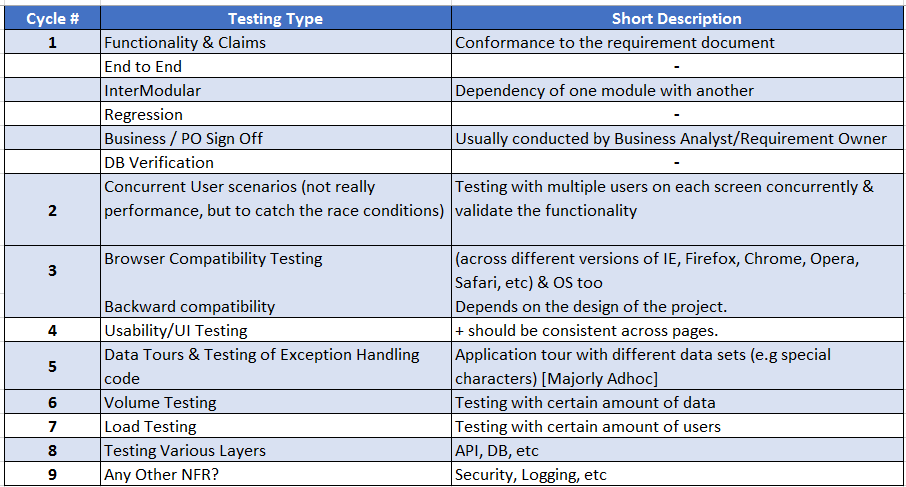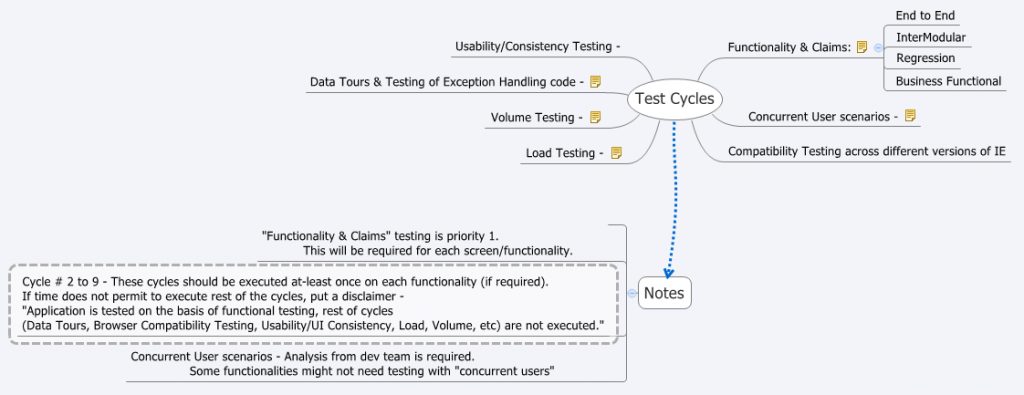The purpose of this post is to –
- Remind testers what they should think while designing tests.
- Remind test/project/delivery managers what they should think while planning for the project and making deadline commitments.

For Managers:
While Planning the tests – For each major Product Backlog Item/Major modules/Functionality, Test/Project Managers should think whether above-mentioned tests are required or not.
You can plan separate test cycles for Usability/Consistency Testing and Data Tours & Testing of Exception Handling code. These need not be clubbed with Functionality & Claims Testing.
For Testers:
While designing the tests – For each requirement under test, testers should think whether above-mentioned test cycles are required or not.
If testers are unsure about any test cycle then they should raise concerns and ask their managers.
Most of the times, “Functionality & Claims” testing is priority 1. This cycle is usually required for each functionality.
Cycle # 2 to 9 – These cycles should be executed at-least-once on each functionality (if required). If time does not permit to execute rest of the cycles, put a disclaimer – “Application is tested on the basis of functional testing, rest of cycles (Data Tours, Browser Compatibility Testing, Usability/UI Consistency, Load, Volume, etc) are not executed.”
- Concurrent User scenarios – Analysis from the development folksis required. Some functionality might not need testing with “concurrent users”
I call it simple because it is very straightforward to remember. I call it powerful because it works for me in every project I have worked. It is not complex like Heuristic Test Strategy Model. To understand HTSM, a newbie might have to read it 4-5 times or even more. HTSM is a better way of planning and designing the tests, but the cycle and points I mentioned above can help you in planning the test cycles quickly when you don’t have much time.
[A recent discussion on HTSM with Ajay B forces me to publish this post]
